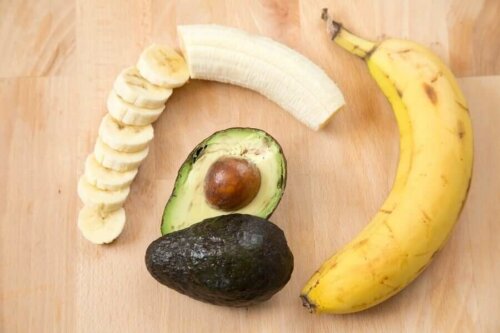Lose Abdominal Fat with these Foods


Written and verified by the nutritionist Eliana Delgado Villanueva
We all want to have a flat belly, but we don’t always follow a proper diet. Most of the time, we can’t lose our abdominal fat because we don’t know how to eat properly. Therefore, the best thing to do is to consult a good nutritionist and ask what foods will help you lose abdominal fat.
Sometimes, the fat located in the belly isn’t easy to burn and you may find it difficult to get rid of it even if you follow a healthy and balanced diet and exercise. Don’t give up! Perhaps this advice will help you.
Obesity is currently a worldwide problem

Today, as obesity reached the highest peaks in history, doctors have begun to focus their attention on food as a source of health. According to the World Health Organization (WHO), there are more than 1.9 billion overweight people in the world. Amazingly, over 650 million of them are obese.
These figures are quite alarming, and now there’s a huge focus on children. This is because there are about 124 million obese children in the world, according to a study the WHO and the Imperial College London published a few months ago in the “The Lancet” magazine.
Abdominal fat and associated diseases
Several studies indicate that abdominal fat is directly related to a greater probability of being afflicted by other diseases. This is mainly because the location of our body fat is as important as the amount we have.
According to new research by Harvard University and the Massachusetts General Hospital, excess abdominal fat is also linked to a risk of developing type 2 diabetes. Also, it’s easier to develop a type of coronary heart disease.
Overall, excessive abdominal fat affects men more than women. It also harms the prostate and is directly related to erectile dysfunction, according to a study performed by the Department of Urology at Cornell University.
On the other hand, according to the Spanish Heart Foundation, the ideal measurement of your waistline should be 35 inches for women and 40 inches for men.
Learn to use these Fat-Burning Spices You Probably Already Have
Foods that help lose abdominal fat

1. Salmon
Salmon is highly recommended due to its high biological value protein. Also, it’s one of the best sources of vitamin D. Obese people are usually deficient in this vitamin, as a study by researchers at the Columbia University School of Medicine found.
2. Broccoli
This cruciferous vegetable is lightweight, full of vitamins, and rich in calcium, a mineral that plays an important role in weight loss. At least that’s what a joint investigation by several US university departments found. The study was published in the Journal of Clinical Endocrinology & Metabolism.
3. Walnuts
As a study by the University of Barcelona points out, habitual and moderate walnut consumption helps burn abdominal fat. The secret here is their intake triggers serotonin, a hormone that also improves mood and satiety.
4. Lose abdominal fat with bananas

Even though many people stay away from bananas because of their high carbohydrate content, this is the best fruit to eat if you want to have a flat stomach. This is because they contain potassium, which helps eliminate liquids.
Find out how to Get Rid of Body Fat by Eating this Way
5. Watermelon
Watermelon is another great fruit that’s rich in potassium with which to eliminate liquids. Also, it can help reduce body fat and reduce blood cholesterol, according to a study from the University of Kentucky.
6. Dark chocolate
Dark chocolate with a content of over 60% cacao is loaded with beneficial antioxidants that help lower belly inflammation. It also soothes your cravings for sweets.
7. Natural yogurt

Whole natural yogurt is recommended in weight-control diets. Also, it’s rich in probiotics (gut microbiota) and therefore promotes intestinal health. You may not know it but if your microbiota is well balanced, then you’re more likely to lose abdominal fat, according to a study from the University of Vienna.
Plus, if you add berries to your yogurt or any other type of fruit with high diuretic power, then the effect will be greater.
In addition to increasing your consumption of these products, you should reduce your consumption of trans fats and refined sugars from your diet. The Spanish Heart Foundation also recommends that you stay active and do some aerobic and strength exercises.
All cited sources were thoroughly reviewed by our team to ensure their quality, reliability, currency, and validity. The bibliography of this article was considered reliable and of academic or scientific accuracy.
- Lee, R. K., Chung, D. , Chughtai, B. , Te, A. E. and Kaplan, S. A. (2012), Central obesity as measured by waist circumference is predictive of severity of lower urinary tract symptoms. BJU International, 110: 540-545.
- Journal of Proteome Research. Benefits of nut consumption for people with abdominal obesity, high blood sugar, high blood pressure. ACS News Service Weekly PressPac: November 02, 2011
- Carrelli, A., Bucovsky, M., Horst, R., Cremers, S., Zhang, C., Bessler, M., Schrope, B., Evanko, J., Blanco, J., Silverberg, S. J., … Stein, E. M. (2016). Vitamin D Storage in Adipose Tissue of Obese and Normal Weight Women. Journal of bone and mineral research : the official journal of the American Society for Bone and Mineral Research, 32(2), 237-242.
This text is provided for informational purposes only and does not replace consultation with a professional. If in doubt, consult your specialist.








